Megafauna skeletons on display at the Cincinnati/Northern Kentucky International Airport (CVG), just south of the Ohio River in Boone County, Kentucky). The famous paleontological site, Big Bone Lick, is only about 20 miles south of the airport.
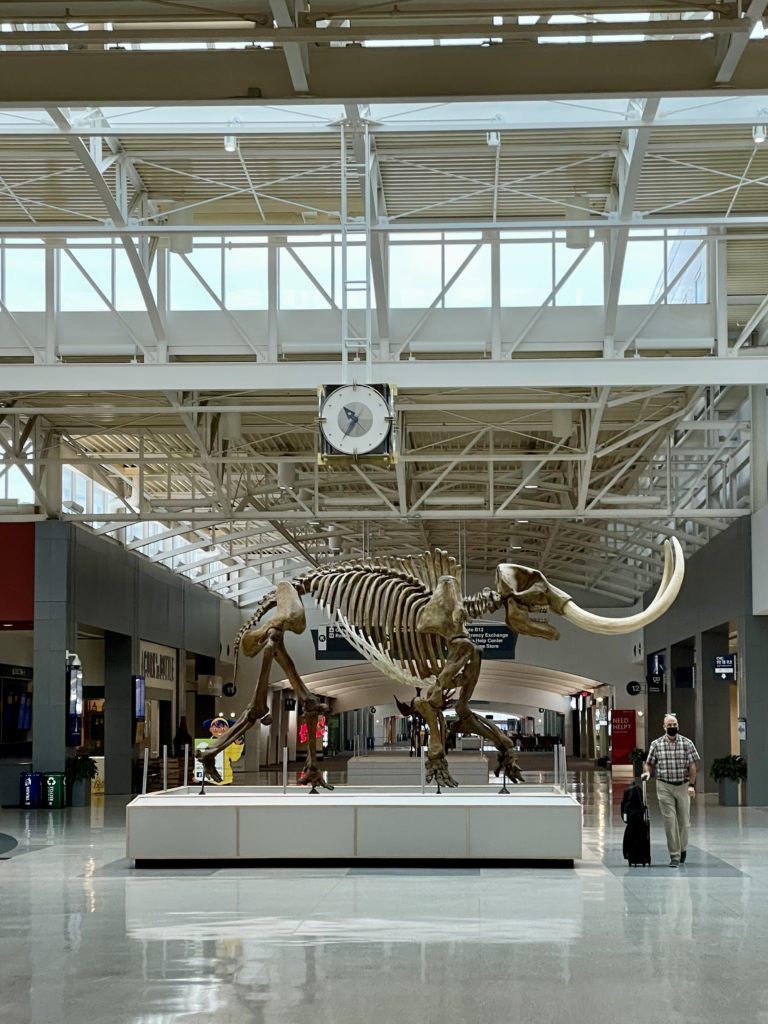


You begin to interest me…vaguely
It only took one 13-million-year-old bone for two paleontologists to reconstruct the dramatic encounter pictured above. That bone is a tibia, or lower leg bone, from an extinct ground sloth (not a giant ground sloth, just a 170 pound medium-sized one). The tibia has 46 tooth marks on it, made by the extinct caiman (a close relative of alligators) Purussaurus.
Read the paper by Pujos and Salas-Gismondi to see how, through a detailed taphonomic analysis of a single bone, they were able to infer not only what animal did the biting, but also how old it was. Unresolved: whether the caiman got the whole sloth or just the leg.

Reference:
Pujos F, Salas-Gismondi R. 2020 Predation of the giant Miocene caiman Purussaurus on a mylodontid ground sloth in the wetlands of proto-Amazonia. Biology Letters 16: 20200239. http://dx.doi.org/10.1098/rsbl.2020.0239
Featured image: Detail of Figure 2 from Pujos and Salas-Gismondi. Artwork by Jorge A. González.
Update: This internship is available again for 2021. Runs from August 1 to October 10, 36-38 hour workweek.
One internship available Ashfall Fossil Beds State Historical Site in Nebraska.

A single internship will be offered for late summer/early autumn for field studies in vertebrate paleontology. With preference to geology or biology students, the position is open to college students with a genuine interest in, and knowledge of vertebrate paleontology, especially those aspiring to further their experience outside of the classroom. Duties include excavation, sorting of micro-vertebrate fossils, prep lab tasks, interpretive duties and other park support tasks.
* 30-34 hour workweek. $11.50 per hour.
* E-mail: rick.otto@UNL.EDU for details and application form.
* Find out more about the Ashfall site at www.ashfall.unl.edu
* Deadline: Applications will be accepted until the position has been filled.
Ashfall Fossil Beds State Historical Park in Nebraska has paid internships available. Ashfall preserves the articulated skeletons of 12-million year old rhinoceros, horses, camels, and deer who died after a volcanic eruption.
Several summer internships are available for field studies in vertebrate paleontology. With preference to geology or biology students, the positions are open to all students with a genuine interest in, and knowledge of vertebrate paleontology, especially those aspiring to further their experience outside of the classroom. Duties include excavation, sorting of micro-vertebrate fossils, prep lab tasks, interpretive duties and other park support tasks.
36-38 hour workweek. $11.50 per hour.
* Three internships will be offered for May 24 to August 10.
* Two internships will be offered for June 20 to September 15.
* One internship will be offered for September 3 to October 20.
Deadline: Applications will be accepted until all positions have been filled, but no later than April 1st. Therefore, advantage to early applicants. Contact the Superintendent at Ashfall for more information.
I enter my Iowa City hotel room and open the curtains to check out the view and there’s a flash of green in front of my eyes. It’s an actual, I-kid-you-not hummingbird flying outside my window.
This is not your typical chain hotel just off the highway. This is the Coralville Marriott Hotel, not far from downtown Iowa City, and even closer to the Interstate 80 exit ramp.
With the help of brownfields remediation grants (thank you, Environmental Protection Agency), the town of Coralville has cleaned up and redeveloped several acres of former wasteland. The Marriott Hotel is part of that redevelopment, and outside my window, I can see another component: the Iowa River Landing Wetlands Park. This charming park covers about 12 acres and includes ponds, an elevated walking trail, and wetlands plants.
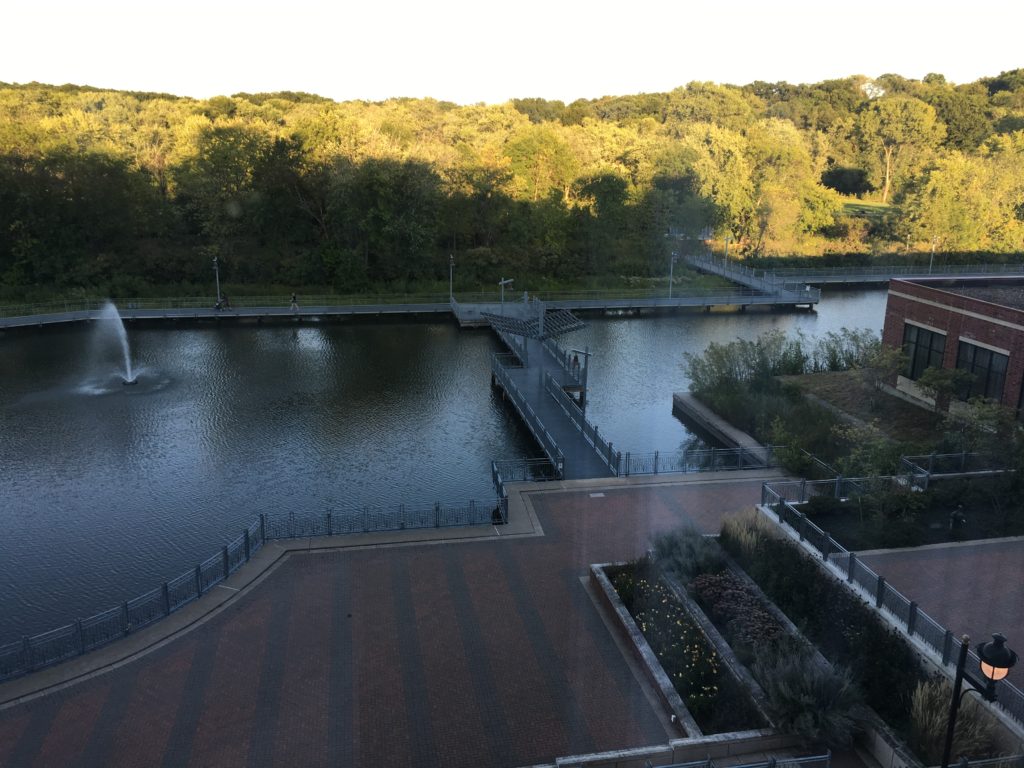
From the lobby, you walk right out the back door to a large plaza, past a raised bed garden where vegetables are grown for the hotel restaurant, and onto the nature trail. Follow the path through the park (or just walk out the front door of the hotel) and it brings you back to the rest of the redevelopment project: several restaurants, an antique car museum, and a historical society.
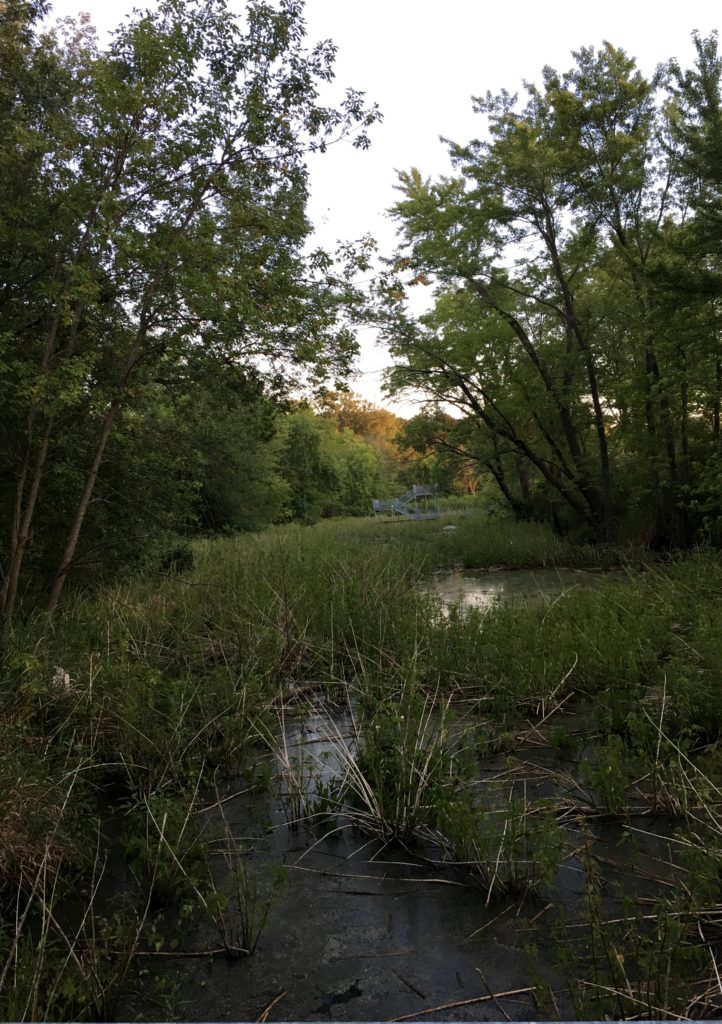
There’s one more little gem inside the Marriott. Iowa City is the home of the famed Iowa Writers’ Workshop at the University of Iowa. Off the hotel lobby is the Iowa Writers Library, a bright room lined with bookshelves full of books by faculty and graduates of the Writers’ Workshop. There’s a fireplace, some comfortable chairs, and even a rolling ladder you can use to reach the books on the top shelves.

Wondering why it’s called Coralville? About 380 million years ago, during the Devonian Period, Iowa City and the surrounding area were under the sea. Extensive coral reefs formed in the water, and then became fossilized. Remnants of these reefs can be found throughout the area.
How old is the earliest passenger pigeon fossil? A single wing bone found at the Lee Creek Mine paleontological locality in North Carolina is 3.7 to 4.8 million years old, a time period known as the Early Pliocene. It is reasonable to ask whether a fossil that old is from the same species as the historically known passenger pigeon, and the paleontologists who identified it were cautious, officially labeling the humerus bone Ectopistes aff. migratorius, but also stating that “Apart from the slightly larger size, which probably would have been encompassed by variation in the recent species, the fossil shows no distinguishing differences from E. migratorius.” (Olson and Rasmussen 2001:300).
The thousands of other fossil bird bones found here were originally deposited in deep marine water and in fact most of the identified birds are ocean-going species like auks, shearwaters, and albatrosses. Land based birds (including the passenger pigeon) comprise a very small proportion of the assemblage (Olson and Rasmussen 2001).
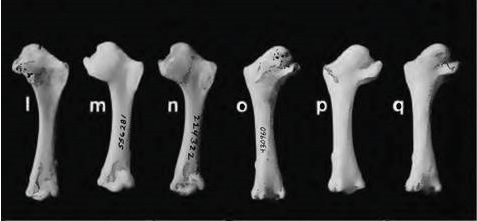
Reference:
Olson, Storrs L., and Pamela C. Rasmussen
2001 Miocene and Pliocene birds from the Lee Creek Mine, North Carolina. Smithsonian Contributions to Paleobiology 90:233-365.
One more quote from paleontologist Clayton E. Ray, this time on the epistemology of identifying animal bones:
“… the techniques [of comparative methodology, i.e., comparing unknowns to knowns] were not codified and universally applied until the nineteenth century under the influence of Cuvier, Owen, and Agassiz. This could not have occurred prior to the Age of Enlightenment/Reason, with the spread of the notion that all problems could be successfully solved through intensive inspection and that ordinary humans could rely on their own careful observations irrespective of authority.[emphasis added] … Until recently, this reliance was taken for granted, so much so that the sublime notion could be expressed profanely, if I may be permitted one homely example: Remington Kellogg, once asked by a colleague what criteria allowed him to conclude that a certain fragmentary whale vertebra was in fact identifiable to a particular species, immediately replied resoundingly, “because it looks like it, goddamit it!” He did not live to experience the postmodern entry of doubt introduced by phylogenetic systematics and social constructivism, in which we question the meaning of all our observations.” (p.7)
More from Clayton E. Ray:
discoveries do not stay discovered; they must be tended like a garden. (p. 15)
approach to truth is a fragile dynamic that requires continual vigilance. There may be some validity to Gould’s (1996:110) claim that “persistent minor errors of pure ignorance are galling to perfectionistic professionals,” but this has no bearing on the overriding requirement that each professional strive assiduously to get things right and never knowingly let even “minor errors” persist.(p. 16)
Reference:
Clayton E. Ray 2001. Prodromus. In Geology and Paleontology of the Lee Creek Mine, North Carolina, III. Edited by C.E. Ray and D.J. Bohaska. Smithsonian Contributions to Paleobiology, number 90:1-20.
I don’t think I have ever read an introduction to a collection of paleontology papers that had more gems than Clayton E. Ray’s “Prodomus” to a volume on Miocene/Pliocene Lee Creek Mine locality. Like this:
Having flattered myself that I had unearthed essentially everything, it is salutary to be reminded through several oversights that in antiquarian, as in paleontological, research one can never do too much digging. Returns in each are apt to be unpredictable and to be meager in relation to time invested (hardly “cost effective”), but there will always be something new, and, to comprehend it when found, one must be steeped in the subject. (p. 1)
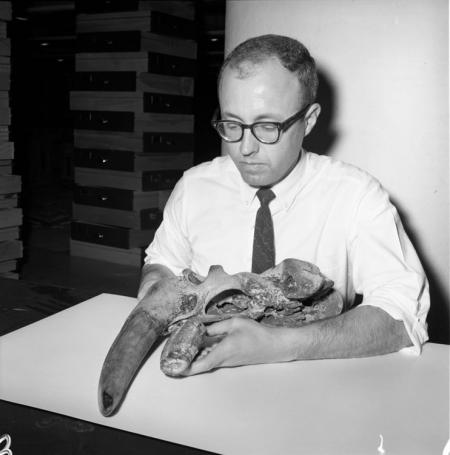
Reference:
Clayton E. Ray 2001. Prodromus. In Geology and Paleontology of the Lee Creek Mine, North Carolina, III. Edited by C.E. Ray and D.J. Bohaska. Smithsonian Contributions to Paleobiology, number 90:1-20.
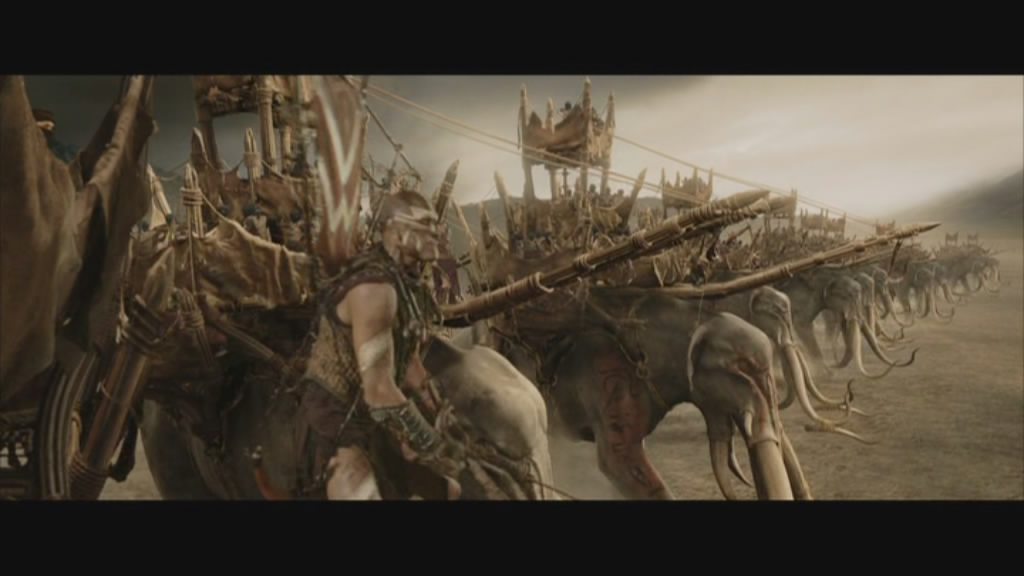
University of Florida scientists have name a newly discovered extinct crocodile Anthracosuchus balrogus, after the Tolkien’s Balrog, defeated by Gandalf in the Mines of Moria.
Name one new species after a character from the Lord of the Rings? Big deal. For Leigh Van Valen, evolutionary biologist, longtime University of Chicago professor, and intellectual eccentric, Tolkien was the inspiration for over two dozen species named after people, places, and things in Middle Earth.
In 1978, long before the Peter Jackson movies, Van Valen described 26 newly recognized early mammal species based on fossils (almost exclusively teeth) from Montana and Wyoming belonging to a group known as condylarths, considered the ancestors of ungulates, the hoofed mammals. They date from the Paleocene epoch (as does A. balrogus), the time just after the extinction of the dinosaurs.
Van Valen put some serious thought into these names. For example, the name Thangorodrim thalion was derived from “Thangorodrim, the mountainous triple fortress of Morgoth in The Silmarillion. Reference is to Purgatory Hill.” [the site where the fossil was collected]. Species name “Sindarin (Elvish) thalion, strong. Reference is to the massive morphology and the generic name.”
Here are all of them. Can you identify the references? The first one is easy, but they get harder. Better have your Elvish dictionary on hand. Coming soon will be the answers, as provided by Van Valen himself in the original article [Edit: Find the answers here]:
L. M. Van Valen. 1978. The beginning of the Age of Mammals. Evolutionary Theory 4:45-80
Oxyprimus galadrielae
Protungulatum gorgun
Deltatherium durini
Chriacus calenancus
Thangorodrim thalion (synonym of Oxyclaenus Cope 1884)
Arctocyonides [Claenodon] mumak
Platymastus palantir
Platymastus [Aletodon] mellon
Mimotricentes mirielae
Desmatoclaenus mearae
Deuterogonodon noletil
Litaletes ondolinde
Bomburia (New genus, later reassigned)
Protoselene bombadili [reassigned to Bubogonia bombadili Williamson 1996]
Litomylus (?) alphamon
Maiorana noctiluca
Tinuviel eurydice
Fimbrethil ambaronae (Oxyacodon agapetillus (Cope 1884))
Mimatuta morgoth
Mimatuta minuial
Earendil undomiel
Anisonchus athelas
Anisonchus eowynae
Mithrandir (New subgenus of Anisonchus)
Ancalagon (New genus later renamed Ankalagon Van Valen, 1980 because the original genus name was preoccupied a Cambrian priapulid, Ancalagon Conway Morris, 1977. No, Van Valen was not the first scientist to have read the Lord of the Rings.)
Niphredil radagasti (an insectivoran now in the genus Paleotomus)
Incidentally, Tolkien wasn’t the only fantasy author he read. Van Valen is most famous for the Red Queen hypothesis, which helps explain why evolution occurs. Its name comes from the character in Lewis Carroll’s Through the Looking-Glass, and What Alice Found There.
For more on Leigh Van Valen, read his obituary in the New York Times.
Still want to read about giant extinct crocodiles? See the Anthracosuchus article here: